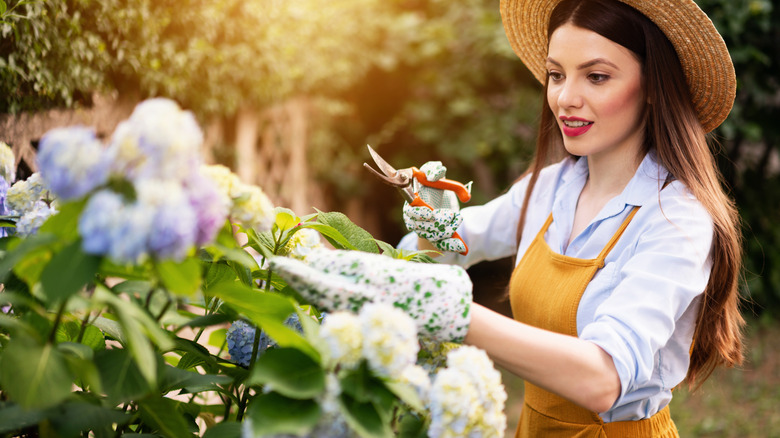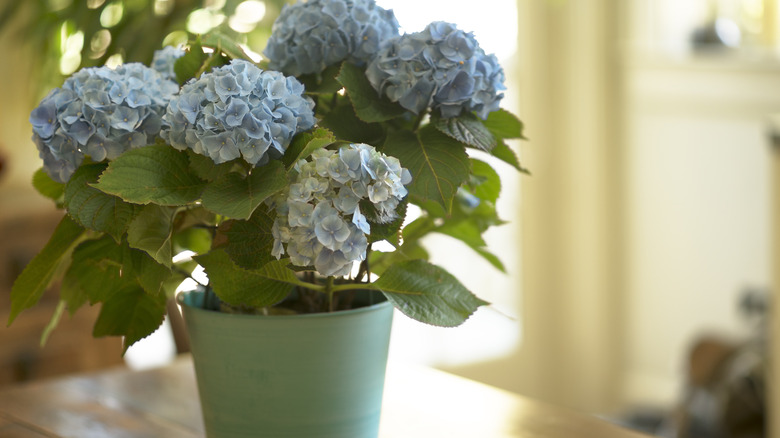Hydrangeas, also known as hortensias, are vibrant flowering plants that can brighten any garden with their bountiful, globular blooms. Mostly easy to maintain, some shrub varieties like the Annabelle Hydrangea and Mopheads may require extra care before heavy rain to keep them from drooping. As the flower heads grow heavy when soaked in rainwater, their stems can’t support the additional weight, causing the plant to flop down. The problem is even more acute for newly-pruned plants, as their blossoms are supported by the younger and weaker shoots. However, keep in mind that if you haven’t received lots of rainfall recently, your drooping hydrangeas may be caused by something else like over fertilizing.
While some hydrangea plants can rise back up once they are dry, it may not work for heavier varieties. But because they have malleable stems that bend rather than break, restoring their former inflorescence is possible, and you can also prevent drooping completely with a few steps. Providing additional support through staking, tomato cages, hoops, or wooden trellises before the rain descends can generally keep the plant from folding over. However, for plants growing closer to a fence, it may be easier to simply tie them to the structure using jute twine.
Ways to protect hydrangeas from too much rain

Younger hydrangea plants can be protected from heavy rain when supported with tomato cages before the storm hits. Generally used to back tomato vines, these no-fuss cages wrap around hortensia and keep the stems in place even under rain torrents. However, their small size makes them unsuitable for the more established plants. Using bamboo stakes to support individual stems works better for the more mature hydrangeas. Simply push stakes at least 6 to 12 inches deep into the soil while ensuring the root system remains undamaged, and loosely tie the stems to the stake with a soft figure-eight tie below the leaves. It is essential that the knots remain loose, as overcrowded blooms can develop mold and get infested with fungal diseases due to poor airflow.
Another way to assist hydrangeas is to use more ornamental wooden trellises that closely match their height. Place them parallel to the plants and tie the larger branches to the structure to protect against rainstorms. However, consider planting your flowering shrubs against a fence for a sturdier and more long-term solution. Finally, you can also cut some of the smaller branches back to give the larger ones more strength, and regularly deadhead the plant as well.
Other preventative measures

While cutting off damaged flowerheads to lessen the weight and providing assistance through staking and fences will generally do the job, sometimes preventing rain exposure completely may be easier. For instance, growing these resilient shrubs in pots that can easily be moved indoors or to a sheltered patio when the weather is unkind minimizes the chances of the plant drooping.
Moreover, as stated previously, not all hydrangea varieties have the same build. Some cultivars like the Bigleaf Hydrangea have sturdier stems capable of supporting the rain-soaked blooms. Similarly, varieties like Oakleaf Hydrangea and Mopheads bloom new flowers on their older, woody stems, which makes them more suitable to areas experiencing heavy downpours. Choosing these varieties will keep your blooms from drooping during rainstorms. Ensuring hydrangeas are given enough space in the garden is another way to maintain their upright posture, as they’ll be able to grow deeper root systems and can prop up against each other when they turn floppy.



